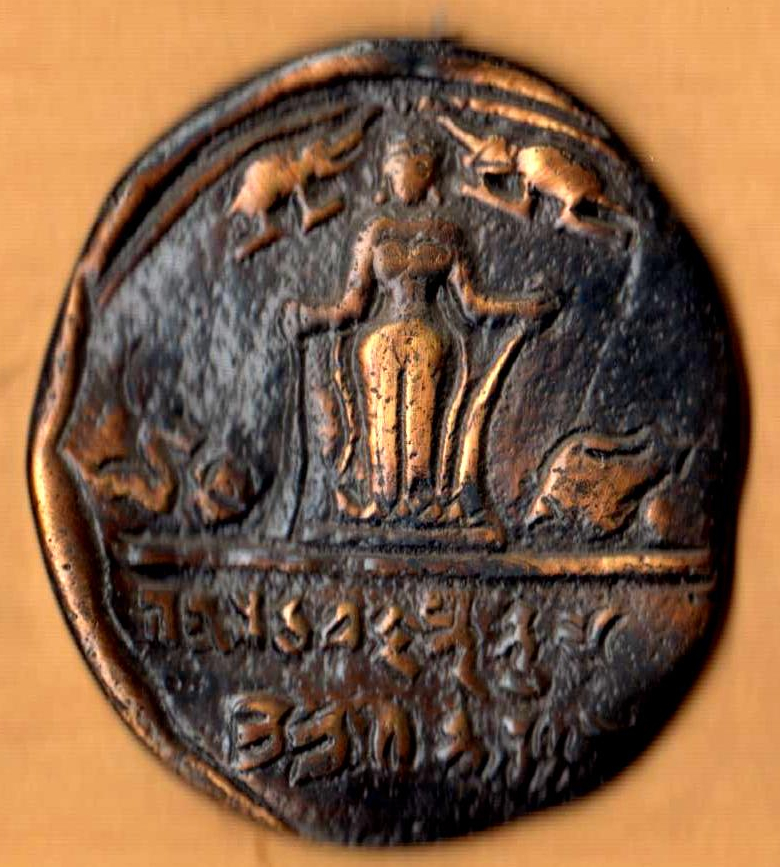♥Vaishali
○ [pt op tr] 아름다운 풍경사진 공양, 나무불, 나무법, 나무승 With the image 'Google Earth & Map data: Google, DigitalGlobe'
●Site 방문일자 불기 2562_0618_201239
Vaishali
▶▶▶ [참조링크11]www.google.com
▶▶▶ [참조링크2]en.wikipedia.org
[위치정보]
Basarh
Bihar, India
25.987611, 85.126190
Images
Street View Photo Sphere See inside
Click highlighted areas to see images
▶▶▶ [참조링크1]www.google.com
-------
Vaishali 는 현재 인도의 비하르 (Bihar) 에있는 도시였으며 현재는 고고학 유적지입니다.
그것은 Tirhut Division 의 일부입니다 .
[...]
고타마 불 (Gautama Buddha) 은 죽기 전에 마지막 설교를 한 장소다.
하나의 사자를 얹은 아소카의 기둥 중 가장 잘 보존 된 것 중 하나를 포함 합니다.
붓다 시대에는 여러 차례 방문한 바이샤리 (Vaiśālī)는 부유하고 번영하며 사람들이 많고 음식이 풍부했던 매우 큰 도시였습니다.
7707 개의 쾌락 경내와 동등한 수의 연못이 있었습니다.
기녀 Amrapali 는 그녀의 아름다움으로 유명했으며 도시를 번영시키는 데 많은 도움을 주었습니다.
▶▶▶ [참조링크7]en.wikipedia.org
Āmrapālī, also known as "Ambapālika" or "Ambapali", was a celebrated nagarvadhu (royal courtesan) of the republic of Vaishali (located in present-day Bihar) in ancient India around 500 BC.[1][2][3] Following the Buddha's teachings, she became an arahant. She is mentioned in the old Pali texts and Buddhist traditions, particularly in conjunction with the Buddha staying at her mango grove, Ambapali vana, which she later donated to his order and wherein he preached the famous Ambapalika Sutta.[
▶▶▶ [참조링크7]en.wikipedia.org
アーナンダ・ストゥーパに設けられた祭壇。 (2005/01/24 Vaishali, Bihar, INDIA) Date 31 January 2005, 13:06:30 Source originally posted to Flickr as Buddhist Altar Author Hideyuki KAMON
Permission & Licensing : Wikipedia
The relic Stupa at Vaishali (Vesali), India. Here the Buddha's relics were interred by the Licchavis of Vesali in 483 BC. Currently the relics are kept in the Patna Museum. Date January 2007 Source Own work Author myself
Permission & Licensing : Wikipedia
お釈迦様の遺骨を最初に納めた8つのストゥーパの1つ。 (2005/01/24 Vaishali, Bihar, INDIA) Date 31 January 2005, 13:06:05 Source originally posted to Flickr as Buddha's ashes Stupa Author Hideyuki KAMON
Permission & Licensing : Wikipedia
Stupa with relics of Ananda (Buddha's attendant monk and cousin), with Asokan pillar, at Vaishali, Bihar, India. Date 29 January 2007 Source Own work
Permission & Licensing : Wikipedia
Ashoka pillar at Vaishali, Bihar, India Date 29 January 2007 Source Own work Author Bpilgrim (talk · contribs)
Permission & Licensing : Wikipedia
English: its viswa santi stupa Date 2 March 2012 (original upload date) Source Transferred from en.wikipedia to Commons. (Original text: i went to vaishali for a short vacation) Author The original uploader was Jaiprakashsingh at English Wikipedia.
Permission & Licensing : Wikipedia
English: Map of places mentioned in ancient Buddhist Texts (like Anguttara Nikaya), Ramayana and Mahabharata. Sources: Approximate boundaries are described by H.C. Raychaudhuri (p. 96-150), and https://books.google.com/books?id=8qvY8pxVxcwC&pg=PA386 Kenoyer, J. M. (1995), “Interaction Systems, Specialised Crafts and Culture Change: The Indus Valley Tradition and the Indo-Gangetic Tradition in South Asia”, in G. Erdosy, The Indo-Aryans of Ancient South Asia: Language, Material Culture, and Ethnicity, Berlin: Walter de Gruyter, ISBN 9783110144475 Raychaudhuri, H.C. (1972), Political History of Ancient India: From the Accession of Parikshit to the Extinction of the Gupta Dynasty, Calcutta: University of Calcutta. Schwartzberg, J. E. (1992), A Historical Atlas of South Asia: University of Oxford Press Singh, U. (2009), A History of Ancient and Medieval India: From the Stone Age to the 12th Century, Delhi: Longman, ISBN 978-81-317-1677-9 Background from http://www2.demis.nl/mapserver/mapper.asp Made with GIMP Date 4 June 2014, 19:38:13 Source Own work Author Avantiputra7
Permission & Licensing : Wikipedia
A few hundred metres from the Relic Stupa is Abhishek Pushkarini, the coronation tank. The sacred waters of the tank anointed the elected representatives of Vaishali. 猿の王様がお釈迦様のために掘ったと言われている沐浴池。 この猿の王様、マンゴーの蜜(ローヤルゼリーとの説も)をお釈迦様に献上するなど、なかなか熱心な佛教徒です。(笑) その他、このヴァイシャーリーは第2回の佛典結集が行われた場所であり、在家佛教の経典である維摩経の舞台でもあります。 お釈迦様も何度もこの街を訪れており、最後の旅もこの街を通ってクシーナガルへ向かいました。お釈迦様が入滅を決心された「寿命決定の地」として八大聖地の1つに数えられています。 (2005/01/24 Vaishali, Bihar, INDIA) Date 31 January 2005, 13:06:23 Source originally posted to Flickr as Ablution bath Author Hideyuki KAMON
Permission & Licensing : Wikipedia
Asokan pillar at Vaishali, Bihar, India. Build by Emperor Asoka in about 250 BC, and still standing. Date 29 January 2007 Source Own work
Permission & Licensing : Wikipedia
English: Roundel 36: Amrapali the courtesan greets Buddha. Carving on ivory Date 12 January 2014, 13:25:06 Source Own work Author Nomu420
Permission & Licensing : Wikipedia
With the image 'Google Earth & Map data: Google, DigitalGlobe'
▶▶▶ [참조링크11]
With the image 'Google Earth & Map data: Google, DigitalGlobe'
▶▶▶ [참조링크11]www.google.com
With the image 'Google Earth & Map data: Google, DigitalGlobe'
▶▶▶ [참조링크11]www.google.com
With the image 'Google Earth & Map data: Google, DigitalGlobe'
▶▶▶ [참조링크11]www.google.nl
With the image 'Google Earth & Map data: Google, DigitalGlobe'
▶▶▶ [참조링크11]www.google.nl
With the image 'Google Earth & Map data: Google, DigitalGlobe'
▶▶▶ [참조링크11]www.google.nl
With the image 'Google Earth & Map data: Google, DigitalGlobe'
▶▶▶ [참조링크11]www.google.nl
< 참고 >
바이샬리는 자이나교 티르 탄 카라가 , Bhagwan 마하비라가 태어난 곳이기도 하다.
그래서 바이샬리는 자이나교와 불교도 모두에서 중요한 장소가되었다.
हिन्दी: विदेह कुण्डपुर, वैशाली, बिहार से प्राप्त सील। सील में ब्राह्मी लिपि में अंकित है कि: कुण्डपुर नगर वैशाली में था और राजकुमार वर्धमान (महावीर) न्याय के उपरांत इस सील का प्रयोग करते थे। English: Copy of the seal excavated from Kundpur, Vaishali. The Brahmi letters on the seal means: Kundpur was in Vaishali. Prince Vardhaman (Mahavira) used this seal after the Judgement. Date 9 December 2015 Source Own work Author जैन
Permission & Licensing : Wikipedia
● [pt op tr] fr